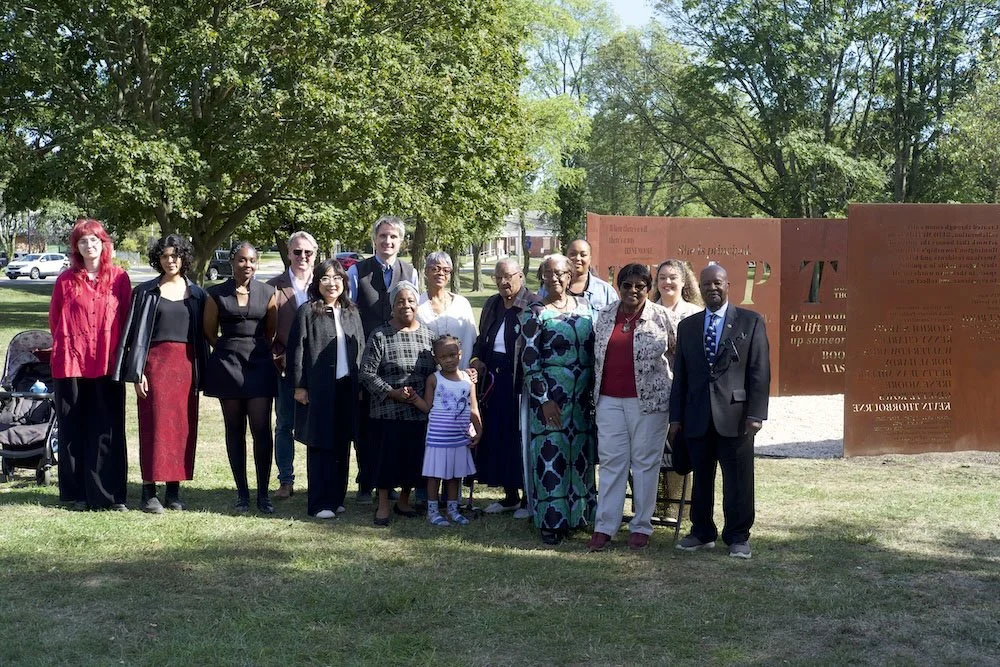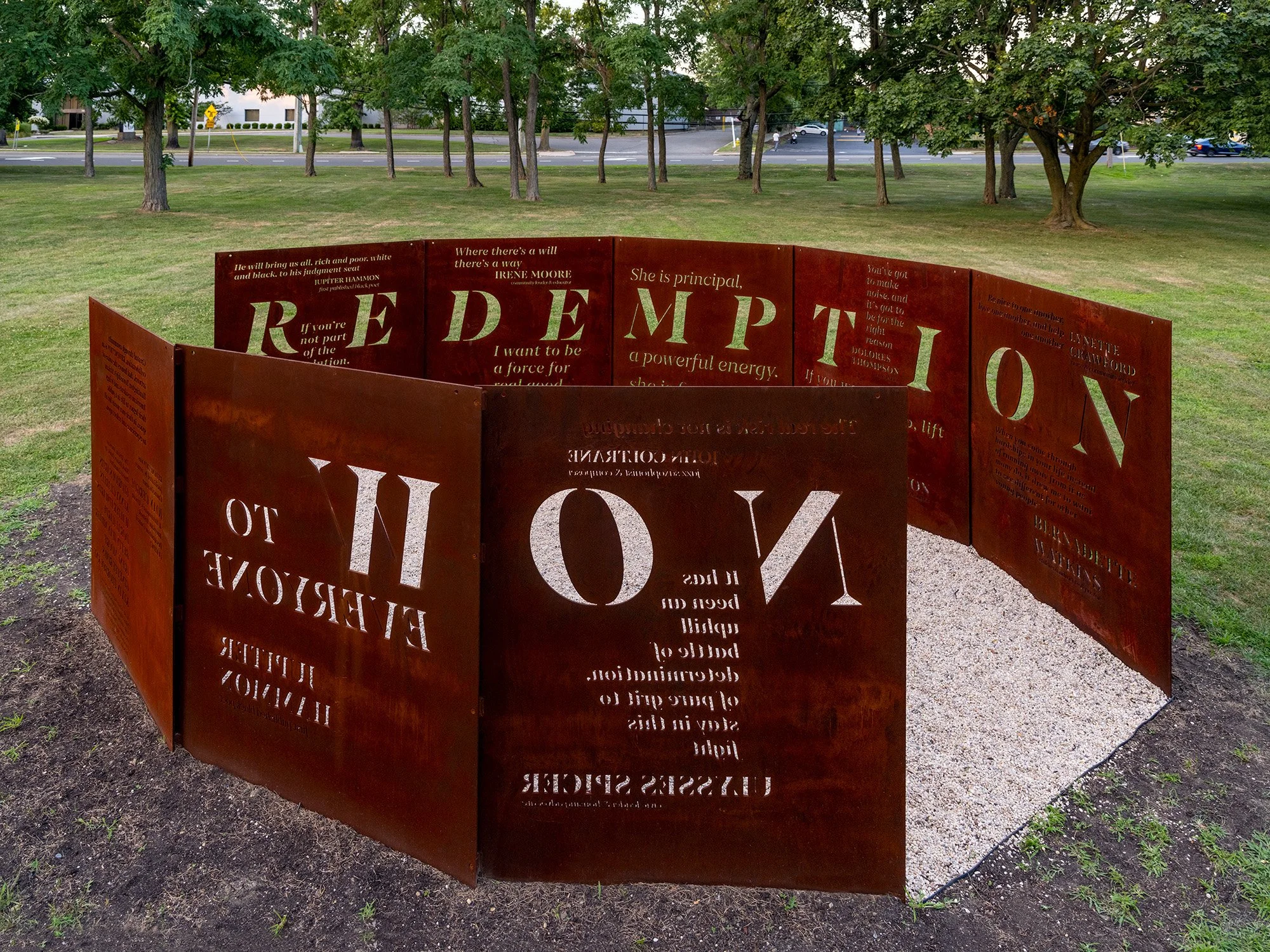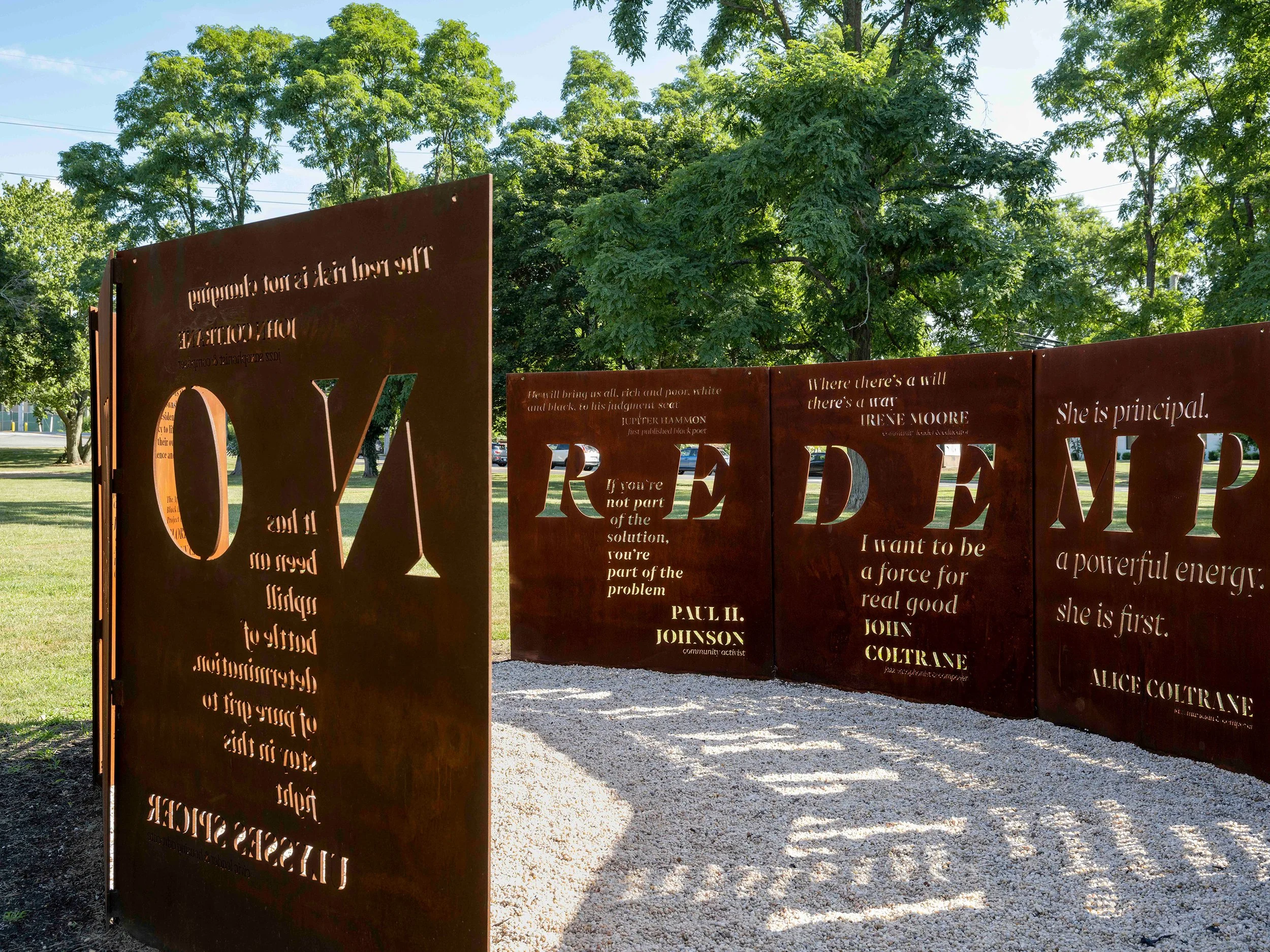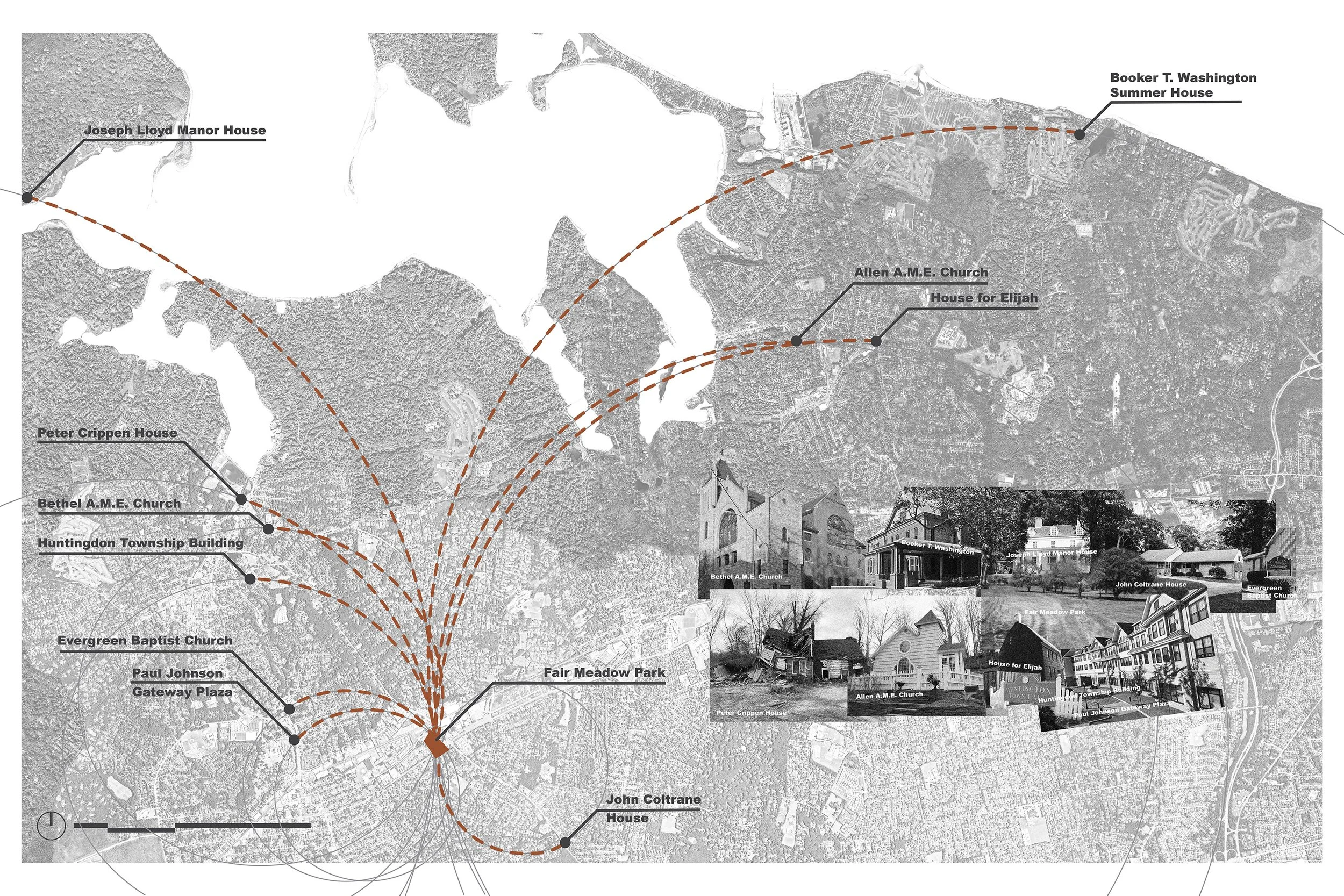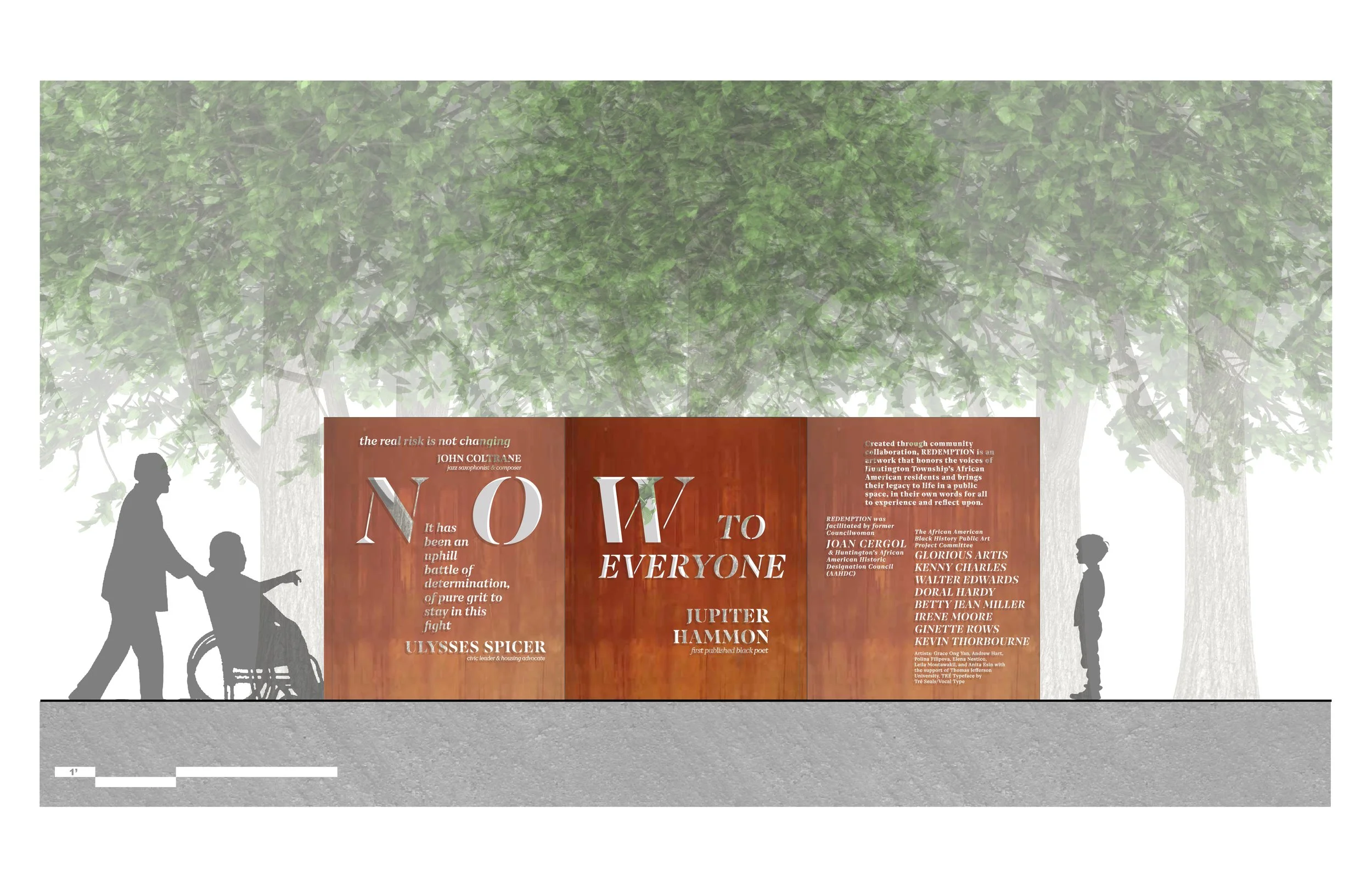redemption: public art for community voices
Redemption is a permanent, site-specific environmental graphic installation that transforms a community’s history into a legible spatial experience. Combining public art, way finding sensibilities, and activist typography, the piece uses weathering steel, light, and graphic form to honor African American histories of Huntington, Long Island while guiding viewers through a contemplative public space defined by materiality and shadows. Redemption was created by collective, an interdisciplinary collaboration led by Grace Ong Yan and Andrew Hart with students from Thomas Jefferson University. TRÉ typeface by Tré Seals. Redemption was commissioned after being selected in a nationwide art competition. Photo by Sahar Coston-Hardy.
The unveiling of Redemption brought out community members of the African American Historic Designation Committee who were deeply involved in the design process. Photo by Jabari Asante.
Inspired by the poetry of Jupiter Hammon, the country’s first published African American poet, who was born into slavery in Huntington, “Redemption Now to Everyone” became the call to action, provoking a response from viewers. Through a number of community engagement events and meetings, the words of African American residents of Huntington were selected and laser cut out of eight large sheets of weathering steel. We interpret the meaning of “redemption” to be hopeful, not about erasing the past, but integrating an ongoing story into a narrative of growth and possibility. Photo by Sahar Coston-Hardy.
The sunlight casts shadows through the powerful words of Jupiter Hammon, Paul Johnson, Irene Moore, John Coltrane, Alice Coltrane, Booker T. Washington, Lynette Crawford, Bernadette Watkins, and Ulysses Spicer. The intention was to equally represent renowned voices with the wisdom of everyday citizens. Photo by Sahar Coston-Hardy.
Members of collective, along with the community, created Redemption. collective is an interdisciplinary collaborative informed by graphics scaled for the public realm and community partnerships with historically marginalized groups within an academic setting. Professors Grace Ong Yan and Andrew Hart led the design of Redemption with Thomas Jefferson University students Polina Filipova, Leila Moutawakil, Anita Esin, and alumnus, Elena Nestico. Photo by Jabari Asante.
The geometry of Redemption is comprised of two circles. At their intersection, they created a shared center. For the African diaspora, that shared space holds stories of origins, migrations, rupture, and renewal. Across African precedents, curved geometries are an archetype found throughout African art, textiles, and architectural forms. This geometry becomes the generative structure for the piece evoking continuity and collective belonging. In contrast to the ridge, orthogonal grids that dominate Western design, circular forms offer a more culturally resonant vocabulary for African American expression.
Site diagram shows the important African American sites in Huntington and how inscribed circular geometries converge at Fair Meadow Park, the project site. Drawing by Betty Hackney.
The site plan shows how Redemption was placed among the trees in Fair Meadow Park. Its position makes the best use of sunlight all day and year-round. Drawing by Betty Hackney.
An elevation of Redemption shows the scalar dynamism and interspersed composition of three of the eight weathering steel panels. Redemption Now to Everyone, an excerpt from Jupiter Hammon’s poem, is at the largest, most visible scale. His words define the artwork as a message of hope and resilience from the past and into the future. Quotes from community members John Coltrane and Ulysses Spicer, appear in composition with Hammon’s words, at smaller scales. Drawing by Betty Hackney.

